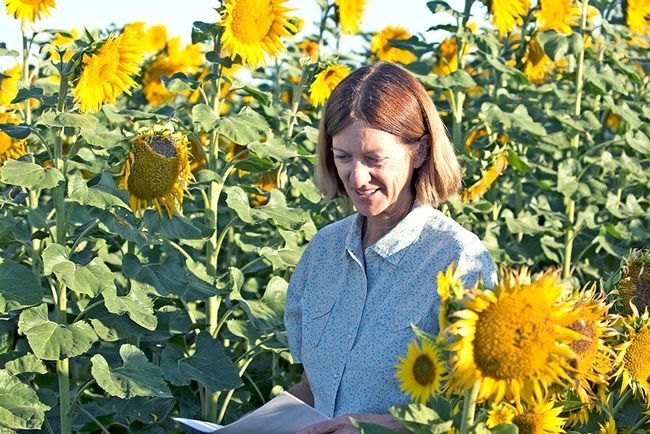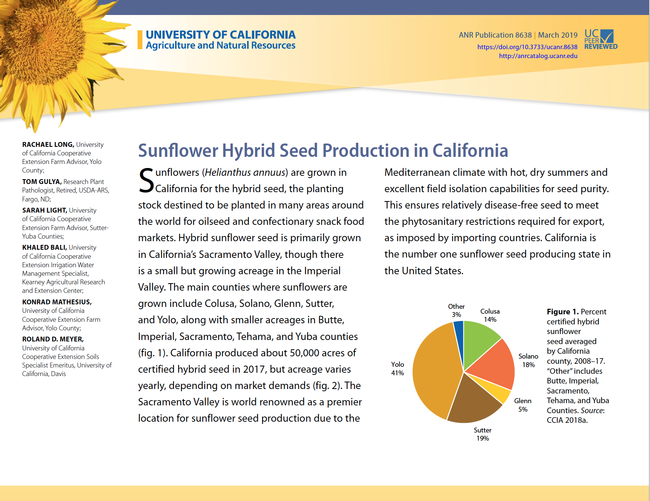Enjoying a tasty sunflower seed snack? Cooking with sunflower oil? Thank a California sunflower seed grower for producing the hybrid seed that's used for planting sunflower crops throughout the United States and the world, for confectionery and oil seed production.
California farmers grow about 70,000 acres of sunflower, mostly in the Sacramento Valley, for hybrid seed stock.
“We have perfect conditions for growing sunflowers, with hot, dry summers and plenty of good irrigation water for producing high quality seed,” says Rachael Long, UC Cooperative Extension farm advisor in Yolo, Solano and Sacramento counties. “We also have good pollination by honey bees and field isolation from wild sunflowers, needed for high yields and genetic purity of planting seed stock.”
Indeed, take a look at the lovely fields of sunflowers blooming in the summertime. Their striking show of bright yellow faces across the valley's vast agricultural landscapes elicit feelings of warmth and happiness.
“But don't stop there!” says Long. “Take a closer look at the fields and you'll see rows of plants with single large flowers alternating with rows of smaller plants with multiple flowers. Stalks with single flowers are female, smaller ones are male; cross pollination occurs by honey bees to produce the hybrid planting seed, harvested from the single female flowers.”
To assist farmers in producing hybrid sunflower seed crops, Long led a team of researchers to produce a new 2019 sunflower hybrid seed production manual for California. The manual provides information on production needs, such as irrigation and nutrient management, as well as a color guide to insect pests, diseases, and weeds of concern for hybrid sunflower seed production.
“In order to ship seed to worldwide markets, strict field certifications are in place to ensure that pests endemic to California are not spread elsewhere,” Long says. Weeds, insects and diseases growers should watch for are identified in the manual.
“Sunflower Hybrid Seed Production in California” is available for free download at https://anrcatalog.ucanr.edu/Details.aspx?itemNo=8638. In addition to Long, authors of the manual include UC Cooperative Extension farm advisors Sarah Light and Konrad Mathesius, retired USDA plant pathologist Thomas Gulya, UC Cooperative Extension irrigation specialist Khaled Bali, and emeritus UC Cooperative Extension soils specialist Roland Meyer.
“A special thanks to the sunflower seed industry and associate editor Dan Putnam, UC ANR agronomist at UC Davis, for their extensive contributions to this manual to make it a valuable resource for sunflower seed growers,” Long adds. “All of us are also grateful to UC ANR Communication Services for putting together a high quality publication!”

